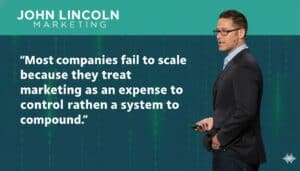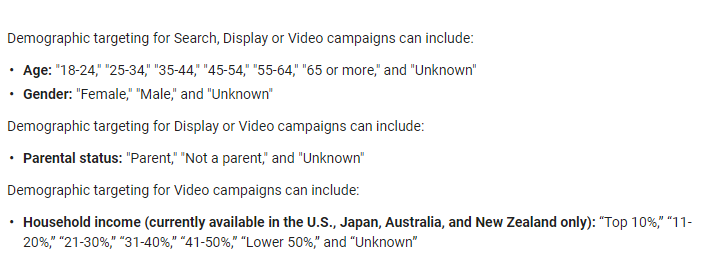
Why Compounding Growth Is the Most Undervalued Digital Marketing Strategy for Investors
Most companies in the $20 to $400 million stage are doing a lot of digital marketing, but very few feel confident that it is actually


 The ability to target your ads so that they appear only to people who you want to see them is yet another advantage that digital marketing offers over some of the more traditional advertising methods.
The ability to target your ads so that they appear only to people who you want to see them is yet another advantage that digital marketing offers over some of the more traditional advertising methods. Here’s why the Quality Score matters: Google doesn’t just care about making money. It’s also concerned with user experience. For example, let’s say that you bid on the keyword “casual slacks” for an ad that has nothing to do with casual slacks. Google doesn’t want to show that ad to users because it’s not relevant to their search term. Google evaluates an ad based on relevance to its keyword. That contributes to its Quality Score. Additionally, Google looks at the ad’s landing page as a factor in determining the Quality Score. It not only evaluates the content but the user-friendliness of the page as well. Google also looks at the expected and historical clickthrough rate (CTR) of an ad as a contributor to the Quality Score. That means ads with historically higher CTRs are likely to have a higher quality score.
Here’s why the Quality Score matters: Google doesn’t just care about making money. It’s also concerned with user experience. For example, let’s say that you bid on the keyword “casual slacks” for an ad that has nothing to do with casual slacks. Google doesn’t want to show that ad to users because it’s not relevant to their search term. Google evaluates an ad based on relevance to its keyword. That contributes to its Quality Score. Additionally, Google looks at the ad’s landing page as a factor in determining the Quality Score. It not only evaluates the content but the user-friendliness of the page as well. Google also looks at the expected and historical clickthrough rate (CTR) of an ad as a contributor to the Quality Score. That means ads with historically higher CTRs are likely to have a higher quality score.  Finally, Google also looks at your AdWords account history. If you’re a credible brand, your Quality Score will be adjusted upwards accordingly.
Finally, Google also looks at your AdWords account history. If you’re a credible brand, your Quality Score will be adjusted upwards accordingly.Great Reads!

Welcome to John Lincoln’s personal website. You can learn about John Lincoln’s books, films, book him to speak and contact him. John is directly associated with many of the businesses mentioned on this website and freely discloses this information.

John Lincoln is CEO of Ignite Visibility, one of the top digital marketing agencies in the nation. Outside of Ignite Visibility, Lincoln is a frequent speaker and author of the books Advolution, Digital Influencer and The Forecaster Method. Lincoln is consistently named one of the top digital marketers in the industry and was the recipient of the coveted Search Engine Land “Search Marketer of The Year” award. Lincoln has taught digital marketing and Web Analytics at the University of California San Diego, has been named as one of San Diego’s most admired CEO’s and a top business leader under 40.
Want to get in touch with John Lincoln? Click Here To Reach Out.

Most companies in the $20 to $400 million stage are doing a lot of digital marketing, but very few feel confident that it is actually

Google Search Quality Rater Guidelines Compliance Checklist Google’s Search Quality Rater Guidelines (SQRG) are not a direct ranking algorithm, but they are the playbook human
Hey everybody, this is John Lincoln. It has been a while since I last updated this website. The last post here was on August 2,
 John Lincoln Speaking At WeddingWire World in DC 2017
John Lincoln Speaking At WeddingWire World in DC 2017 John Lincoln Speaking at WeddingWire World DC 2017 The Power of SEO: How to Improve Your Rankings With over 1000 attendees, WeddingWire